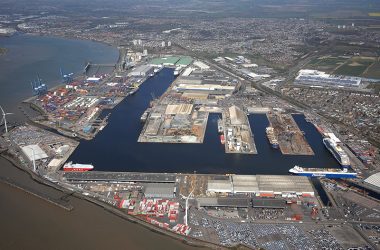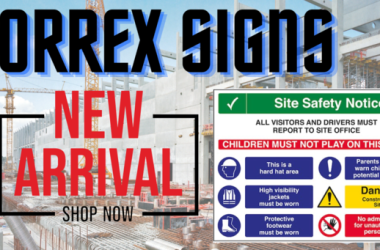Last Updated on: 18th March 2024, 06:09 pm
Starting a commercial construction project is a significant endeavor that requires meticulous planning, precise execution, and effective management. Whether you’re constructing a new office building, retail space, or industrial facility, success hinges on several key factors. From project inception to completion, every stage demands attention to detail and adherence to best practices.
Here are some key suggestions to ensure the timely, budget-friendly, and high-quality completion of your commercial construction project. Adhering to these guidelines can mitigate risks, enhance productivity, and ultimately deliver a successful result that aligns with your business requirements.
Define Clear Objectives
Before breaking ground, establish clear project objectives. Define the scope of work in detail, outlining the specific functionalities and features of the finished building. This includes aspects like usable square footage, number of floors, layout configurations, and any special requirements. Determine a realistic timeline for completion, taking into account the complexity of the project and potential permitting delays. Finally, establish a comprehensive budget that considers all anticipated costs.
By clearly defining these objectives at the outset, you can ensure that everyone involved in the project is working toward the same goals and that the final product aligns with your vision. This clarity also helps to avoid misunderstandings and costly changes later on in the construction process.
Select the Right Team
Choose a competent and experienced project team to guide your commercial construction project to success. This team should include a licensed architect with expertise in commercial building design, a qualified structural engineer to ensure the building’s safety and stability, and a reputable general contractor who can oversee the entire construction process.
Look for professionals with a proven track record in projects that are similar to yours, and ensure they have strong communication and collaboration skills. Consider requesting references and contacting past clients to get a sense of their work ethic and ability to deliver projects on time and within budget. A skilled and experienced team will be able to anticipate potential challenges, develop effective solutions, and navigate the complexities inherent in any commercial construction project.
Establish a Realistic Budget
Create a detailed budget that includes all direct and indirect expenses related to your commercial construction project. Direct costs include materials, labor, equipment rentals, and permits. Indirect costs encompass professional fees for architects, engineers, and inspectors, as well as temporary facilities, insurance, and project management software.
To create a realistic budget, obtain quotes from multiple vendors for materials and subcontractors. Factor in a contingency fund of 5–10% to cover unforeseen expenses that may arise during construction. Regularly monitoring and updating your budget throughout the project is crucial for staying on track financially. By establishing a realistic budget from the outset and adhering to it closely, you can avoid financial strain and ensure the project’s long-term success.
Develop a Detailed Project Plan
Develop a thorough project plan that delineates the schedule, key milestones, and roles of each team member. This plan should encompass all phases of construction, from pre-construction activities like permitting and site preparation to construction itself and final inspections. Utilize project management software or Gantt charts to visually represent the project schedule and track progress. Clearly define milestones, which are key benchmarks that signal the completion of specific stages in the project. Assign clear roles and responsibilities to each team member, ensuring that everyone understands their tasks and how they contribute to the overall project goals.
Regularly review and update the project plan throughout the construction process to reflect any changes or adjustments that may become necessary. A detailed and dynamic project plan keeps everyone accountable, facilitates clear communication, and helps to ensure the project stays on track for successful completion.
Prioritize Safety
Safety should be a top priority throughout the construction process. Implement strict safety protocols that comply with all local, state, and federal regulations. This includes developing a comprehensive safety plan that outlines potential hazards, mitigation strategies, and emergency procedures. Provide all workers with proper safety training, ensuring that they understand safe work practices for their specific roles and the use of any necessary personal protective equipment (PPE). Perform routine safety inspections to identify and mitigate any potential hazards at the worksite. A strong safety culture fostered through ongoing communication, training, and enforcement helps to prevent accidents and injuries, protecting workers and ensuring a smooth-running project.
Establishing Strong Foundations
The foundations are the bedrock of any building, providing stability and support for the entire structure. When it comes to commercial construction, opting for concrete foundations is often the most reliable choice. Concrete offers superior durability, strength, and resistance to environmental factors like moisture, fire, and pests, making it ideal for supporting the weight and stresses of a commercial building.
Properly preparing the site for foundation construction is critical. This involves tasks like soil testing, excavation, and ensuring proper drainage to prevent future issues with the foundations. The concrete itself should be mixed according to precise specifications and poured by experienced professionals to ensure its strength and integrity.
In some cases, depending on the specific soil conditions and building design, alternative foundation systems like pilings or driven foundations may be necessary. Consulting with a structural engineer early in the planning stage is crucial to determine the most appropriate type of foundations for your specific project.
If you’d like to learn more about concrete foundations and their suitability for your project, a structural engineer can provide valuable insights and ensure safe and secure foundations for your commercial building.
Communicate Effectively
Maintain open and clear communication among all stakeholders involved in the commercial construction project. This includes the project owner, architect, engineer, contractor, subcontractors, and any regulatory agencies. Regular project meetings serve as a platform to discuss progress, address challenges, and ensure that everyone’s on the same page. Utilize effective communication tools like project management software, shared document platforms, and video conferencing to facilitate real-time updates and collaboration. Transparency and open communication are essential for fostering trust, resolving issues promptly, and keeping the project moving forward efficiently.
Monitor Progress Closely
Regularly monitor progress against the project plan to identify any delays or issues early on. This involves tracking key milestones, completion dates for deliverables, and adherence to the budget. Utilize project management software with reporting features to gain real-time insights into project progress. Conduct regular site inspections to assess the quality of work and ensure it meets the specified standards.
Proactive monitoring allows for early intervention and course correction if deviations from the plan arise. By addressing problems promptly, you can minimize their impact on the overall project timeline and budget.
Manage Changes Effectively
Changes are inevitable in any construction project, due to unforeseen circumstances, design modifications, or evolving stakeholder requirements. Establish a formal change management process to ensure that all changes are evaluated and implemented smoothly. This process should involve a clear protocol for submitting change requests, outlining the information required and the approval hierarchy.
Once a change request is submitted, the project team should assess its impact on the budget, schedule, and overall project goals. The team should then communicate the impact transparently to stakeholders and obtain written approval before proceeding. Implementing a well-defined change management process helps to minimize disruptions, maintain project control, and ensure all changes are documented and accounted for.
Ensure Quality Control
Implement a rigorous quality control process to guarantee that construction work meets the specified standards as outlined in the project plans and building codes. This involves conducting regular inspections throughout the construction process at various stages. Inspectors should verify that materials, workmanship, and construction methods adhere to the approved plans and specifications.
Quality control measures may involve visual inspections, material testing, and performance testing of building systems. Address and correct any identified deficiencies promptly to avoid rework and ensure the final product meets the highest quality standards. A strong quality control program helps to prevent expensive repairs later on and ensures the building’s durability and functionality.
Use Technology Wisely
Embrace technology tools to enhance productivity, efficiency, and communication on the job site. Building Information Modeling (BIM) software allows for the creation of 3D models of the building, facilitating better design coordination, clash detection, and visualization of the finished product. Project management software helps to streamline communication, task management, document sharing, and budgeting throughout the construction process. Drone technology can be utilized for aerial site inspections, progress monitoring, and capturing high-quality photographs and videos of the construction project. Integrating these technologies can optimize workflows, improve decision-making, and foster collaboration among project team members.
Plan for Sustainability
Incorporating sustainable practices and materials into your commercial construction project can yield significant environmental and economic benefits. This could involve specifying energy-efficient building materials, appliances, and lighting systems. Sustainable design strategies like optimizing natural light and ventilation can reduce reliance on artificial lighting and heating/cooling systems. Consider implementing water-saving plumbing fixtures and landscaping practices that promote water conservation.
By planning for sustainability, you can not only reduce the environmental impact of your building but also potentially qualify for tax credits and rebates, and lower long-term operating costs. A sustainable building can also be a valuable marketing tool, attracting tenants or customers who prioritize eco-friendly practices.






